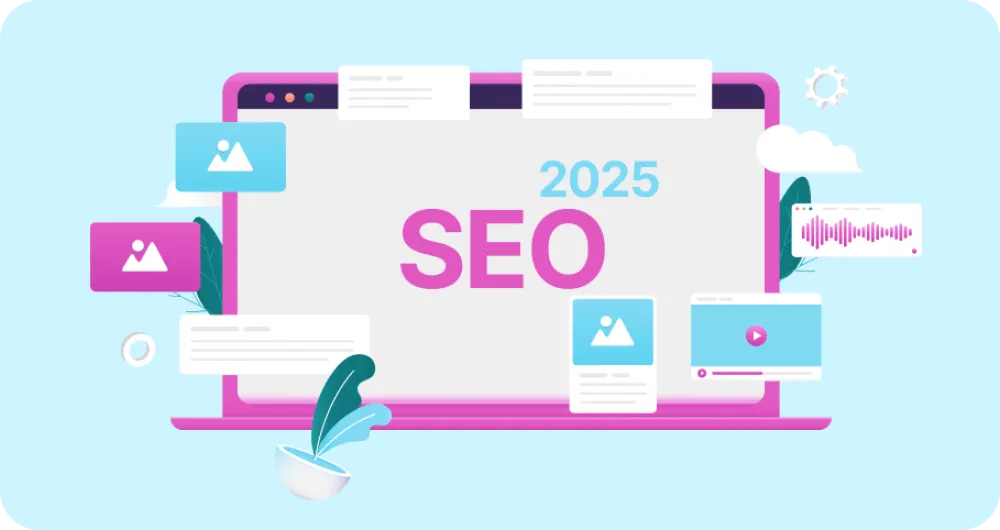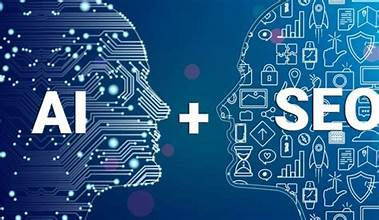Business SEO in 2025 is evolving fast. Discover the ultimate strategies, AI-driven trends, and smarter techniques that help brands achieve high-impact rankings, better user experience, and sustainable digital growth.

-
Introduction
-
Business SEO in 2025: Strategy & Planning
-
Keyword Research & Content Mapping
-
On-Page Optimization Essentials
-
Technical SEO & Site Performance
-
UX/UI & SEO Alignment
-
Content Marketing & Link Building
-
AI & Business SEO in 2025
-
Analytics & Reporting
-
Bonus: Ultimate SEO Prompt
-
Conclusion
-
Helpful Internal & External Links
Introduction
Business SEO in 2025 is more than rankings , Search Engine Optimization (SEO) and metadata — it’s the strategic engine behind visibility, trust, and digital dominance. With AI-driven algorithms shaping search behavior, brands that evolve their SEO approach will capture more customers and outperform competitors.
Whether you’re a CEO, founder, or marketing leader, mastering Business SEO in 2025 is essential for growth.
In 2025, Search Engine Optimization (SEO) is more than keywords and backlinks — it’s the backbone of every successful business’s digital presence. As search algorithms evolve and artificial intelligence reshapes user behavior, businesses that master SEO gain a decisive competitive edge.
Whether you’re a CEO, marketing strategist, or entrepreneur, understanding Business SEO is no longer optional. It’s how your brand gets discovered, trusted, and chosen. This guide breaks down every key component — from strategy and technical optimization to AI trends — so you can build a powerful, future-proof SEO ecosystem.
1. SEO Strategy & Planning
Every successful SEO campaign begins with a plan — a roadmap that aligns search visibility with business goals.
Define Your Objectives
Start with clear, measurable goals:
- Increase organic traffic by X% in Y months
- Rank top 3 for [primary keyword]
- Drive Z qualified leads per month
Without defined metrics, you’re only guessing.
Understand Your Audience
Know who you’re talking to — their pain points, search behavior, and intent. Use tools like Google Trends, Semrush, or Ahrefs to uncover what your customers are actually typing into search bars.
Competitive Benchmarking
Analyze your top competitors:
- What keywords drive their traffic?
- How do they structure their content?
- What backlinks strengthen their authority?
This insight helps you outperform them strategically.
SEO Roadmap Example
- Month 1–2: Audit & strategy
- Month 3–4: Keyword mapping & content creation
- Month 5–6: Technical optimization & link building
- Month 7+: Analytics, iteration, and scaling
2. Keyword Research & Content Mapping
Keywords are still SEO’s foundation — but in 2025, it’s all about search intent.
The New Keyword Approach
Instead of targeting one keyword per page, build clusters:
- Main Keyword: “Business SEO services”
- Supporting Keywords: “SEO consulting for businesses,” “corporate SEO strategy,” “enterprise SEO tips”
Google rewards depth, context, and semantic relevance.
Mapping Your Content
Each keyword cluster becomes a pillar page supported by topic-specific blogs.
Example:
- Pillar: “The Complete Guide to Business SEO”
- Sub-topics: keyword research, link building, AI SEO trends
Helpful Tools
- Semrush Keyword Magic Tool – find long-tail opportunities
- Answer the Public – uncover real search questions
- Google Search Console – track impressions and clicks
3. On-Page SEO Optimization
On-page SEO ensures that every element on your site helps search engines understand and rank your content.
Core Elements
- Title Tags – Keep under 60 characters; include primary keyword early.
- Meta Descriptions – 150–160 characters summarizing your value.
- Headers (H1–H3) – Use a logical hierarchy.
- Internal Links – Connect relevant pages to improve crawlability.
- Image Alt Tags – Describe visuals for accessibility + image SEO.
Content Quality
Google’s E-E-A-T principles (Experience, Expertise, Authority, Trust) now define rankings.
Practical tips:
- Cite reliable sources.
- Use data and case studies.
- Write for users first — algorithms second.
4. Technical SEO & Site Performance

Behind-the-scenes optimization separates good websites from great ones.
Site Speed
Slow sites lose users and rankings.
Tools: Google PageSpeed Insights, GTmetrix, Lighthouse.
Fixes: compress images, leverage caching, and use CDN (Content Delivery Network).
Mobile-First Indexing
Google crawls the mobile version first. Ensure your design, fonts, and CTAs scale smoothly across devices.
Core Web Vitals
- LCP (Largest Contentful Paint): under 2.5 s
- FID (First Input Delay): under 100 ms
- CLS (Cumulative Layout Shift): below 0.1
Crawl & Indexing
Audit your sitemap, robots.txt, and canonical tags. Fix broken links and duplicate pages.
5. UX/UI & SEO Alignment
Search engines now measure user satisfaction — and design plays a massive role.
Design Principles
- Keep navigation intuitive.
- Highlight CTAs without overwhelming users.
- Maintain consistent branding.
Accessibility Matters
Alt text, descriptive buttons, and proper contrast ratios not only help users with disabilities but also improve SEO performance.
Mobile Experience
Responsive design is no longer optional. Test usability on different screen sizes and devices.
6. Content Marketing & Link Building
Content and links remain the dual engines of SEO authority.
Create Value-Driven Content
High-performing business blogs:
- Offer actionable insights.
- Address industry pain points.
- Use visuals and data to educate.
Smart Link Building
- Guest Blogging – contribute to reputable industry sites.
- Digital PR – pitch expert quotes or reports to journalists.
- Broken Link Building – replace dead links with your content.
- Partnership Backlinks – collaborate with industry peers.
Avoid Spammy Tactics
Quality beats quantity — one authoritative link > 50 low-trust ones.
7. AI & SEO in 2025

Artificial intelligence is redefining SEO faster than ever.
AI Content Generation
AI tools like ChatGPT, Jasper, and Writesonic can accelerate content production — but always edit for originality and human voice.
Search Generative Experience (SGE)
Google’s AI-driven SERP now displays synthesized answers. Businesses must:
- Optimize for conversational queries.
- Structure content with FAQs & schema.
- Focus on authority + credibility signals.
Predictive Analytics
AI helps forecast traffic patterns and keyword opportunities. Platforms like MarketMuse or Surfer AI offer deep optimization insights.
Automation in SEO
Use automation for:
- Reporting dashboards
- Rank tracking
- Competitor alerts
8. Analytics & Reporting
You can’t manage what you don’t measure.
Core SEO Metrics
- Organic Traffic – via Google Analytics
- Keyword Rankings – via Semrush or Ahrefs
- Bounce Rate & Session Time – measure engagement
- Backlink Profile Growth – track authority gains
- Conversion Rate – measure real business impact
Reporting Framework
Monthly SEO reports should include:
- Overview of key metrics
- Wins and insights
- Challenges & fixes
- Next month’s focus
Visual Dashboards
Use Data Studio (now Looker Studio) to visualize traffic trends, keyword shifts, and ROI.
9. Bonus: The Ultimate All-in-One SEO Prompt
Prompt:
“You are my SEO strategist. Analyze my business niche, audience, and website goals. Create a detailed 3-month plan covering keyword research, on-page optimization, technical SEO, link-building strategy, and performance tracking KPIs.”
Use this inside ChatGPT or any AI assistant to generate personalized, data-driven SEO plans tailored to your business.
Conclusion: The Future Belongs to Strategic SEO
SEO in 2025 is no longer a checklist — it’s an ecosystem combining strategy, UX, AI, and analytics. Businesses that master all these layers will dominate visibility, trust, and conversions.
Whether you’re improving Core Web Vitals, refining keyword clusters, or using AI to uncover trends, remember: SEO is not just about ranking — it’s about relevance.


